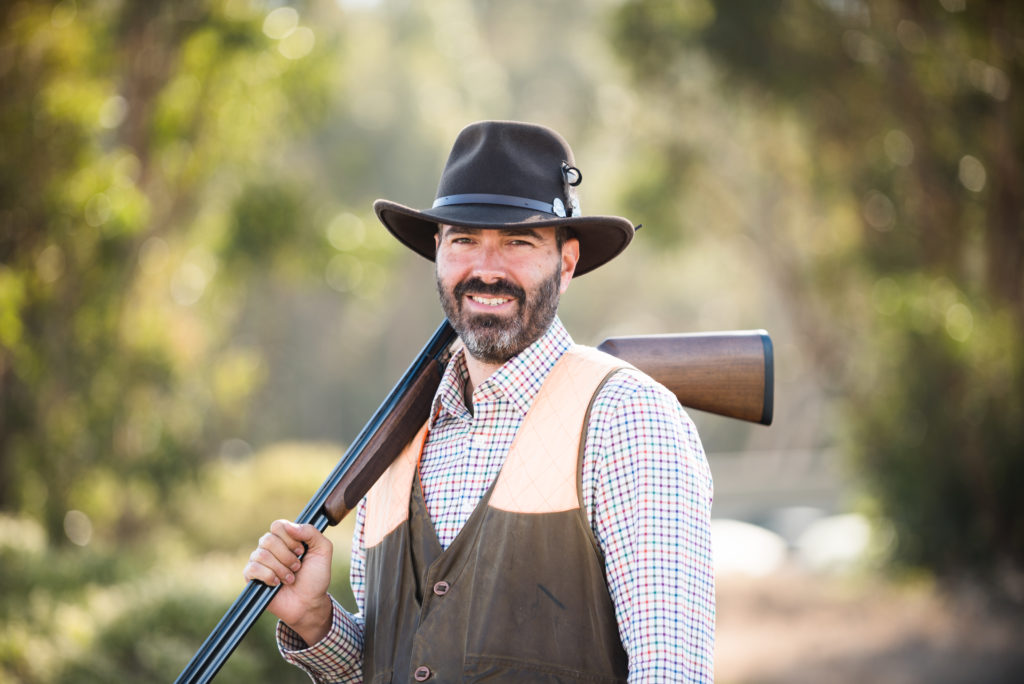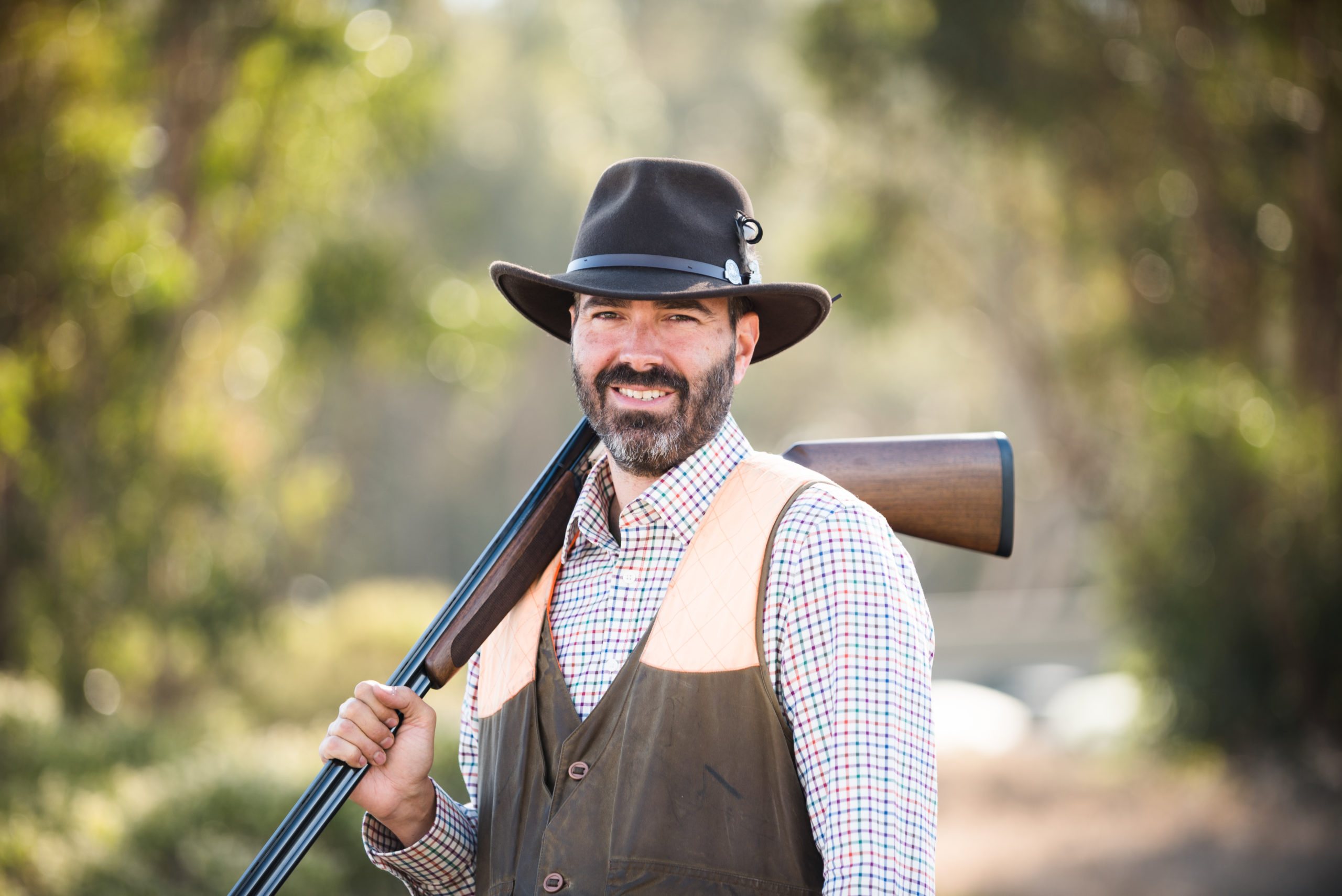Q + A with Writer Andrew Bogan


An avid wingshooter and ardent conservationist, Andrew is a founding member of Wing & Barrel Ranch in Sonoma’s wine country, president of The Teal Club—California’s oldest duck club in the Suisun Marsh, and a board member of the North American Grouse Partnership. He volunteers as a hunter education instructor for the State of California and spends as much time as possible afield with his wife, two young daughters, and their pudelpointer Tacktor.
Q: Who is Andrew Bogan?
A: I grew up in New Jersey but discovered the outdoors in Pennsylvania’s Pocono Mountains where my family had a cottage in the woods on a lake (I still meet my brother there each summer to fish for largemouth bass). My first introduction to upland hunting was high in the Rocky Mountains above my uncle’s home in Colorado at age 13. I was trained as a bioscientist, and I work as an investor, but my free time is still largely spent outdoors, mostly in Northern California and Utah’s Wasatch Range. I love sharing my adventures in written form.
Q: Where do you call home?
A: My family’s primary residence is in Los Altos Hills, California. Today, The Hills is part of Silicon Valley, but the town’s founders were dedicated to the “preservation of the rural atmosphere of the foothills.” Given that we routinely have mountain lions and coyotes roaming through our backyard, I’d say they succeeded. We also have a mountain home in Big Cottonwood Canyon in Utah where we get to see moose every summer.
Q: Main influences in the world of outdoor writing?
A: My writing probably owes more to William Zinsser and his book On Writing Well than any traditional literary sources. As a scientist, I like to disassemble things and learn how to rebuild them from the simplest parts. Zinsser did that with writing, and I’ve always appreciated it. I’m embarrassed to admit that I have just begun reading Ernest Hemingway in my 40s (literature was never my thing), but I genuinely enjoyed The Old Man and the Sea and Green Hills of Africa. But, The Sun Also Rises was too much about socialites drinking and not enough about trout fishing for me.
Q: What motivates you to write?
A: I love the outdoors—the landscapes, the wildlife, the sense of limitless potential that one feels heading to a duck blind in the predawn darkness, or when putting the dogs into the first thick cover on a hillside on a crisp morning, or silently approaching the water’s edge with a fly rod. I write about it both to ensure that I remember it myself and to share it with my readers, hopefully reminding them of their own cherished memories afield.
Q: What was most memorable for you in writing the “Perdiz in the Pampas” story for Covey Rise?
A: Argentina is known as a pilgrimage destination for wingshooters—and deservedly so. I, too, was amazed by the seemingly limitless flocks of doves and parakeets in South America, but it got me thinking about two very similar and massively abundant species in North America—the passenger pigeon and the Carolina parakeet—that ended up as two of the earliest extinctions on this continent. I hope South America manages their extraordinary bird resources better than we did as they wrestle with agricultural development and growing human populations.
Q: Would you recommend a hunt in Argentina to others?
A: Absolutely. Argentina is a beautiful and welcoming country, the wingshooting is phenomenal, and the opportunity to combine ducks, doves, and perdiz in a single geographical region is fantastic. I’m doubtful that any other upland bird flushes as fast as a perdiz. It’s worth the trip just to see one explode into the air. Also, there’s no better steak than an Argentinian asado of skirt steak cooked slowly over the red coals of a hardwood fire raked beneath the grill the way the gauchos have done it for centuries.
Q: If you have one day off with no obligations these days, what do you do?
A: Those days are spent at The Teal Club, our duck club and wetland conservation property in California’s Suisun Marsh. We are blessed with two dozen species of waterfowl and upland gamebirds to hunt there in season. And when the hunting season ends, the striped bass fishing in the surrounding sloughs continues year-round.
Q: What do you like in a hunting dog?
A: Prey drive. You can teach a dog to stop, you can’t teach a dog the desire to go in the first place. That has to be innate.
Q: What is your favorite upland bird to hunt and why?
A: That’s a tough question. I think my #1 overall spot goes to the greater prairie chicken, but I have a favorite upland bird for each of the different landscapes that I hunt besides the prairies, too. On the marsh: snipe. In thick streamside cover: California quail. On ridgelines in the coastal ranges: band-tailed pigeon. On a spring morning in hilly oak chaparral: wild turkey. In Midwestern cornfields: pheasants. On the Alaskan tundra: willow ptarmigan (red grouse). In high-desert mountains: chukar. On the pampas: perdiz. I’ve never hunted the Northwoods for ruffed grouse or woodcock, but I’d love to someday!
Q: Side-by-side, over-under, or other?
A: Over-under for upland and an inertia-driven semiautomatic for waterfowl, only because the confines of a duck blind make reloading an over-under too difficult. Side-by-sides are gorgeous—I’m just no good at shooting them!
Q: What is your #1 bucket-list trip?
A: Cold Bay on the tip of the Alaska Peninsula was always the bucket-list trip. I finally got there a decade ago when my father turned 70. Where else can you catch trophy salmon (silver, chum, pink, and sockeye) and sea-run trout (Dolly Varden char) on a fly rod in the morning, walk up willow and rock ptarmigan over the dogs on the tundra midday, and catch the evening flight of Pacific black brant, Canada geese, pintails, and eider? Just keep an eye out for the ubiquitous (and gigantic) brown bears! So now that I’ve done that trip, what’s next? My dad turns 80 this summer, so we are headed back to Cold Bay!
“Perdiz in the Pampas” written by Andrew Bogan was originally published in Volume 9, Number 3 (April-May 2021) of Covey Rise.
WANT TO BE THE FIRST TO GET CONTENT LIKE THIS?
























